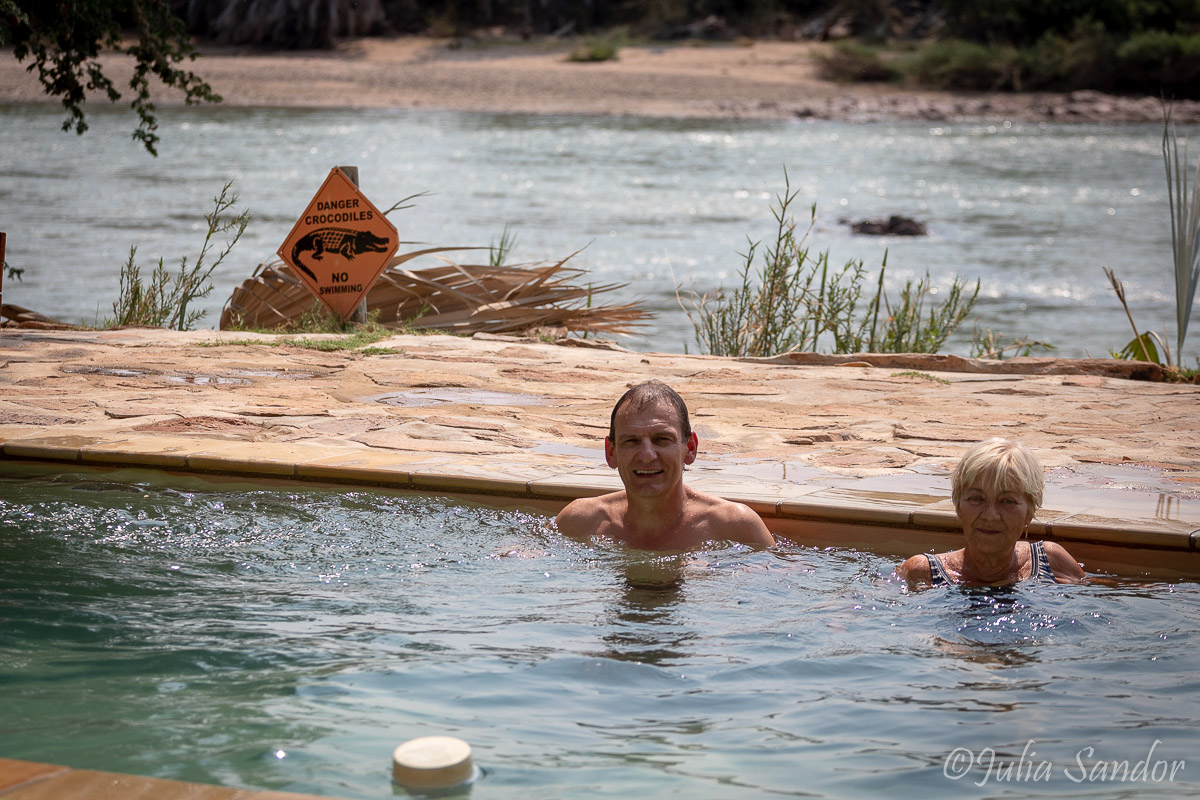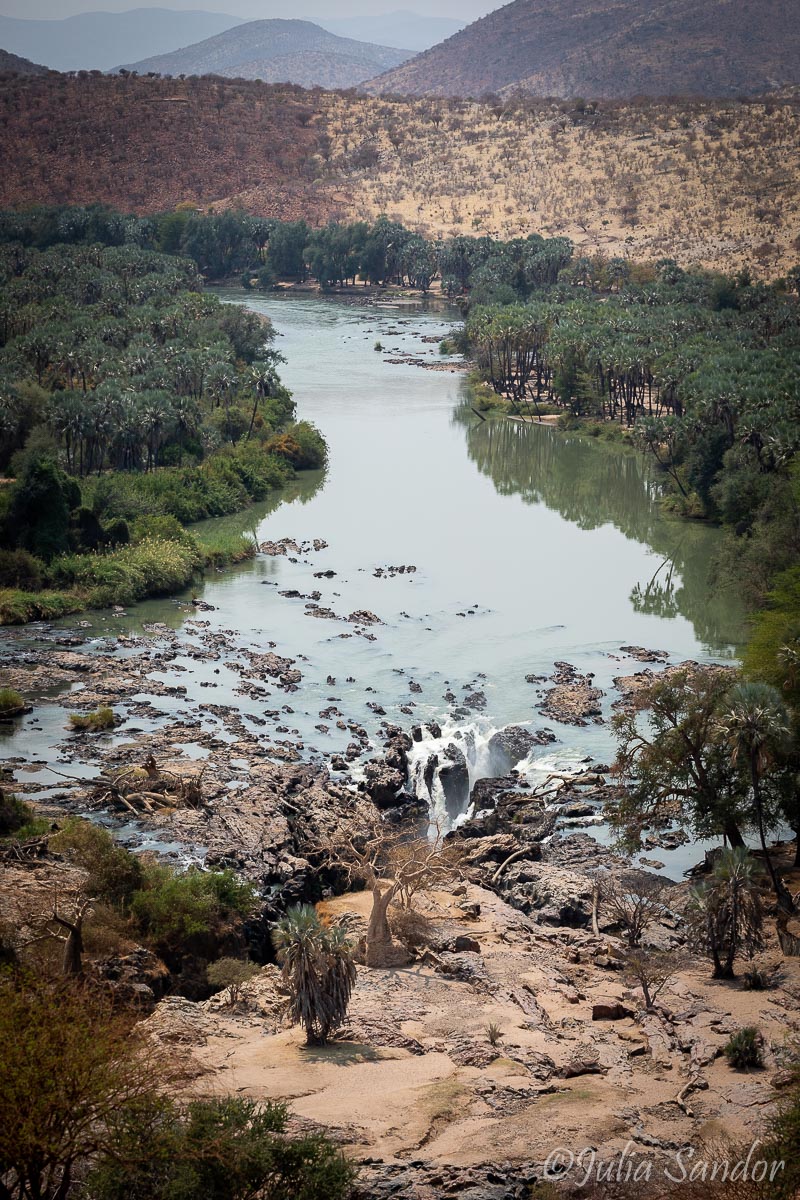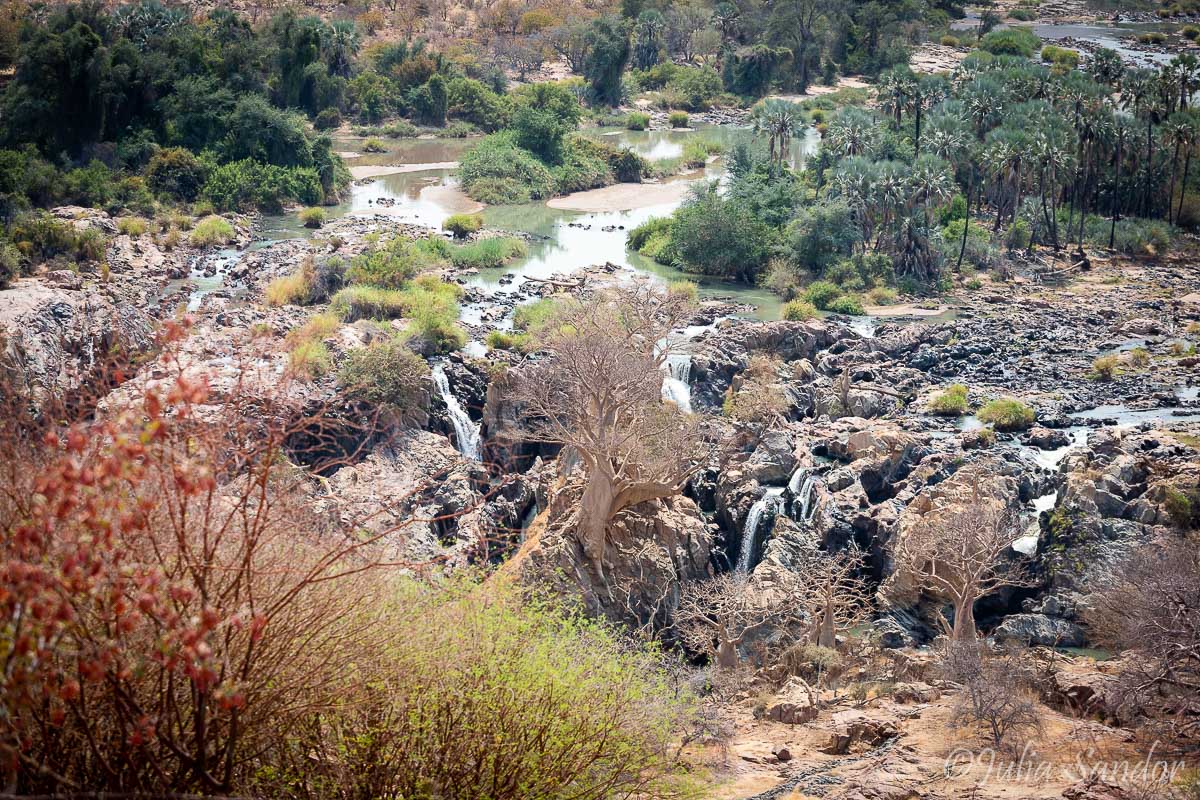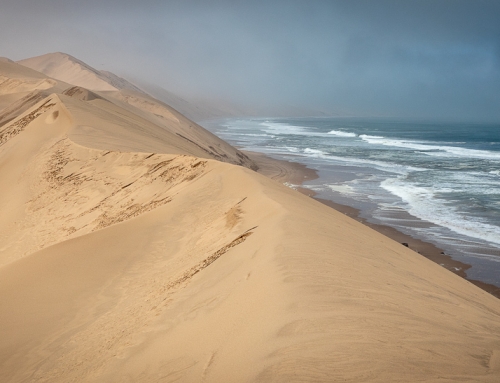We reach the most northern point of our journey: Epupa, an idyllic site on the banks of the Kunene River. An oasis after many kilometers of arid landscape, where Namibia meets Angola, the Kunene River drops 40 meters in the Epupa fall and the Himbas are at home.
We stay 2 nights at a camp site we were at during our previous visit, and the spot is just as beautiful as it was. Our bathroom is open-air, but private – except some monkeys that we observe in the morning playing with the shower head. Across the river is Angola, but we are warned not to swim over – the most frequent inhabitants of the river are crocodiles.
The sun set on the terrace of the camp site before dinner is picturesque. Surrounded by palm trees and green reed grass, the water slowly flowing in front of our feet, and the not too distant sound of the Epupa falls giving the background music make the atmosphere perfect.
This time we decide to skip the rafting – too many hungry crocs, and boats that are basically out of control, we know that from experience.
Our visit to a Himba village
Instead this time we decide to visit a Himba village to learn more about this natural tribe living in the northern part of Namibia. In the village we visit, 3 women are sitting on the ground, chatting and working, and are surrounded by several children. After greeting them in their language (Moro=Good morning) and exchanging some courtesies (asking them how they are = Peri vie?) they seem to accept our intrusion and become friendly. Men are not around, they are out far with the animals, and come home only when rainy season arrives. Save

Women spend the mornings in the village creating clothes and jewelry out of leather, wood and pearls for themselves and for sale. They also prepare their own cosmetics – a special ground ochre for their skin and a black paste used as perfume. We learn that husbands have to be careful, if their wife tells them she is visiting her mother, and takes her perfume basket with her, she won´t return again… :)
In the afternoon women collect wood and go to the well for water, which they carry on their heads. Our guide explains us that one village is one family, young men bring wives from one of the neighboring villages.

They even invite us into one of their small houses made of mud, where there is a fire to keep the house warm. The cooking is done outside, in front of the house, on another fireplace. They sleep on cow skin which they clean with cow tail. The houses are full of self-made dresses, all serving different purposes, like weddings, the water carrying or normal daily wear.
Tribes in the region
But the Himbas are not the only tribe we meet in this region. On our way to Epupa we stop in Opuwo, the only major town in the area. Here we see well-dressed Herero women, half-naked Himba girls and colorfully dressed Demba ladies talk to each other, walk around the streets and do their shopping. An amazing mixture of cultures.


















































